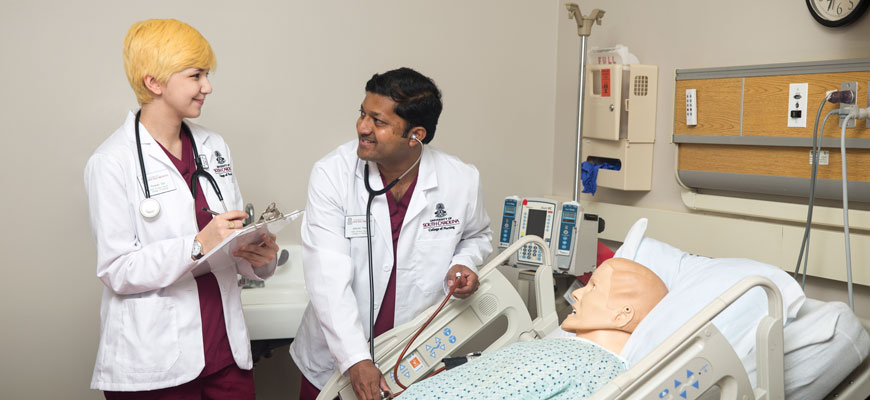
One size, color does not fit all
Why nursing simulation tools, education need dose of diversification
Posted on: September 12, 2022; Updated on: September 12, 2022
By Téa Smith, teass@email.sc.edu, 803-777-7549
When Crystal Murillo first encountered the nursing mannequins commonly used to train new nurses, she was struck by one thing: All the mannequins and task trainers in the lab were white.
That was 2013, while Murillo was a simulation coordinator at Francis Marion University and graduate student at the Medical University of South Carolina. But the lack of mannequin diversity at MUSC’s Healthcare Simulation Center wasn’t an anomaly. When Murillo reached out to the leading mannequin manufacturers, she learned that mannequins of color weren’t even an option due to durability issues with pigmentation.
“It was that initial, very powerful observation that made me think about how I could connect the dots and diversify the mannequins, the facilitators and the pedagogy,” says Murillo, who is now director of the Center for Simulation and Experiential Learning at the University of South Carolina's College of Nursing. “We are teaching our students and preparing them for what they’re actually going to see in practice.”
Health professions simulation is supposed to replicate the hospital setting, and, in some ways, it does. Students in simulation labs practice medical techniques like IV insertion and cardiac or respiratory treatment and receive real time feedback from instructors and simulated participants.
But the lack of patient diversity, Murillo says, can limit the experience for students. That’s why she joined forces with a group of like-minded professionals pushing for change in the manufacturing of mannequins. Her realization also led her to conduct an anonymous survey during a conference at the University of Kentucky in 2018 about incorporating diversity, equity and inclusion into simulation.
One big takeaway? Some nursing educators are uncomfortable talking about racism and cultural differences. Some educators are uncomfortable even teaching about the social determinants of health.
At the end of the day, it’s not necessarily what I know as a nurse that’s going to make the most difference. It’s who I am as a person and how I understand an individual patient's complete lived experience.
Leslie McGhee
The social determinants of health are where people live, work, play and learn — or external factors that influence health status. The factors can range from being unable to afford medication to rural communities not having access to a hospital to lacking reliable transportation.
But understanding those determinants is a critical part of nursing education, according to Leslie McGhee, a student in the college's Master’s Entry to Practice Nursing program, who says that learning the social determinants of health has helped her be a better nurse and communicator.
“At the end of the day, it’s not necessarily what I know as a nurse that’s going to make the most difference,” says McGhee. “It’s who I am as a person and how I understand an individual patient’s complete lived experience.”
And the stakes are high, says Murillo, whose research in simulation and nursing education has made the university a leader and a hub for resources and best practices in the state.
“It’s really about preparing them to transition to the workforce,” she says. “And in order to do that accurately, what we do in education should mirror the patient populations in which they will serve in practice.”
Share this Story! Let friends in your social network know what you are reading about